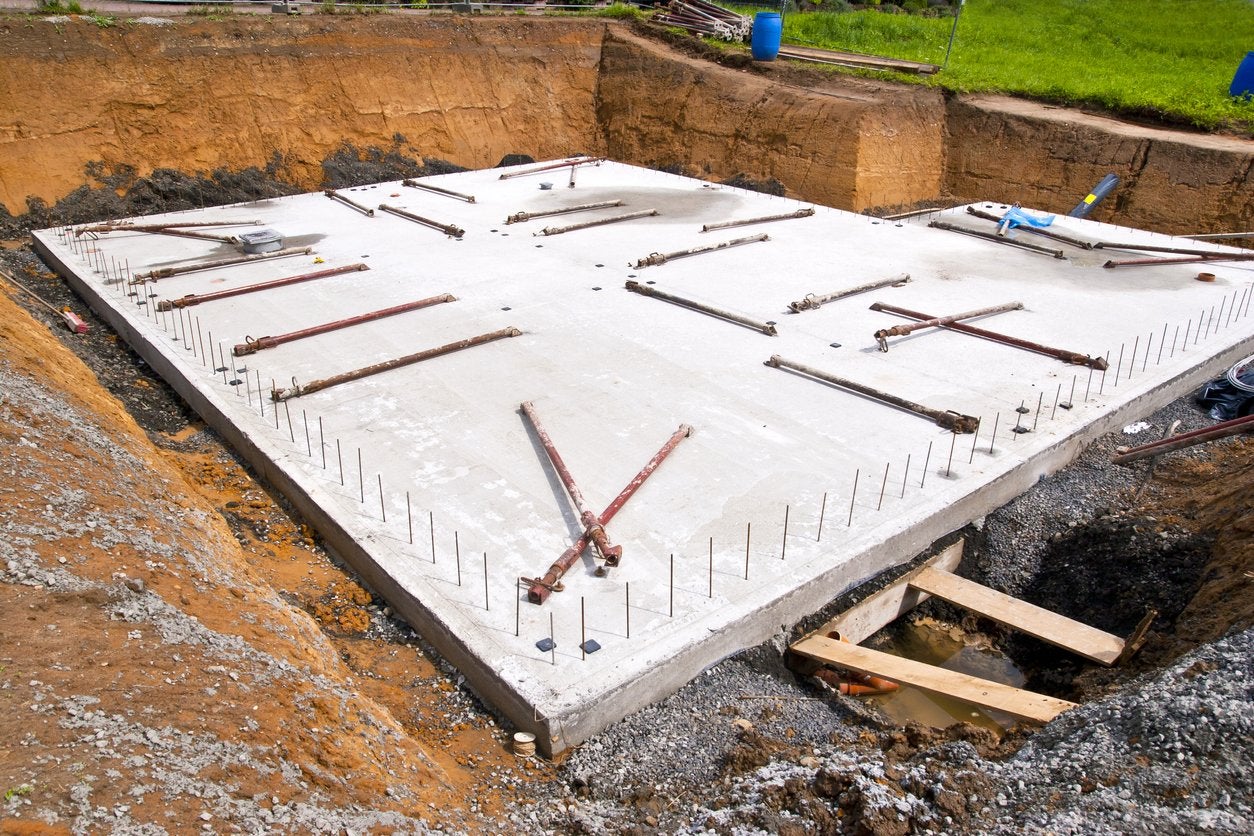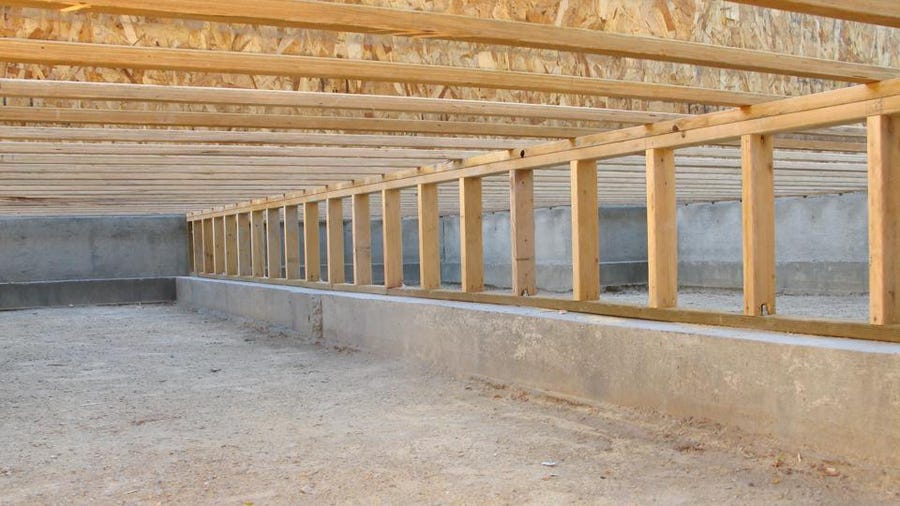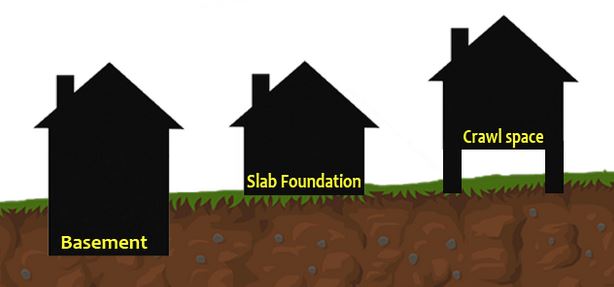Building a new home is a monumental decision involving countless choices, each with unique pros and cons. One of the most significant decisions you’ll have to make is selecting the foundation that will support your home’s structure for decades.
Slab Foundation vs Crawl Space are the two primary options, and while both have their benefits and drawbacks, it can take time to decide which is the right choice for your project. Don’t worry, though. We’ve got you covered! This blog post will dive deep into foundation building and explore the differences between slab and crawl space options. Let’s get started.
What Is A Slab Foundation?
A slab foundation is a type of foundation that is poured directly onto the ground. It’s typically made of concrete and is designed to provide a sturdy, stable base for your home. Slab foundations are commonly used in areas where the ground is stable and there is little risk of settling or shifting. There exist four different kinds of slab foundations:
- On-Grade Slab (Monolithic): Monolithic slab foundation includes essential footings, a wire mesh to reinforce the slab, and a layer of sand or rock to promote drainage. The slab and footings are poured together simultaneously. On-grade slabs are best suited for warm-weather areas without freezing weather.
- Floating Slabs: These slabs have detached footings that do not anchor into the ground but are reinforced with rebar or wire mesh. Floating slabs are not used for homes but are sufficient for sheds.
- Conventional (T-Shaped): Conventional foundations have heavy-duty reinforcements and footings below the frost line. These foundations extend past the perimeter of a home and are used in environments that experience frost. Stem walls rise above the footings with a layer of concrete foundation between them.
- Raised Slab Foundations: Raised slab foundation combines a slab-on-grade foundation and crawl space foundation with a perimeter wall and footings. The increased space is filled with soil or rock for drainage and topped off with a layer of the concrete slab foundation.
Pros Of Slab Foundations
1. Cost-Effective Installation
One of the most significant advantages of slab foundations is that they’re relatively inexpensive to install. Unlike other foundations requiring extensive excavation and foundation walls, slab foundations are poured directly onto the ground. You only need to spend a little money on materials, equipment, or labor to install the foundation. Additionally, since the construction process is relatively simple, you’ll save on construction time, which can translate into more savings.
2. Low Maintenance
Another advantage of slab foundations is that they’re low maintenance. Since no crawl spaces or basements exist, you won’t have to worry about moisture or pest issues. This can save you a lot of time and money on maintenance and repairs over the life of your home. Additionally, since there are no spaces for debris to accumulate, cleaning the foundation is relatively easy.
3. Energy Efficient
Slab foundations can also improve the energy efficiency of your home. Since the foundation is in direct contact with the ground, it can be a thermal mass. This means that the foundation can absorb heat during the day and release it at night, helping to regulate your home’s temperature. Additionally, since there are no spaces between the foundation and the ground, there’s no opportunity for air leaks, which can help to reduce your energy bills.
4. Better Durability
Slab foundations can also be more durable than other types of foundations. Since there are no crawl spaces or basements, there’s less opportunity for moisture to penetrate the foundation, which can lead to damage over time. Additionally, since the foundation is in direct contact with the ground, it’s less likely to shift or settle over time, which can help ensure your home’s stability.
Cons Of Slab Foundations
Slab foundations are a popular choice for homes and buildings but have disadvantages. Now, let’s discuss some of the most significant drawbacks of slab foundations.
1. Difficulty Accessing Plumbing And Electrical Systems
One of the most significant disadvantages of slab foundations is that they make it challenging to access plumbing and electrical systems. Since no crawl space exists, any repairs or upgrades require cutting the concrete slab foundations. This can be a tedious and expensive process. Additionally, any changes to plumbing or electrical systems can weaken the foundation’s structural integrity, making it a less desirable option for those who frequently upgrade their home’s systems.
2. Susceptibility To Cracking And Settling
Slab foundations are also more susceptible to cracking and settling than other foundation types. This is particularly true in areas with expansive soils or high-water tables. When the soil underneath the slab expands or contracts, it can cause the foundation to shift or crack. This can lead to structural damage that may require costly repairs. Additionally, once a slab foundation cracks, repairing it can be difficult and expensive.
3. Lack Of Insulation
Another disadvantage of slab foundations is that they lack insulation. Since the foundation is in direct contact with the ground, it can absorb and release heat from the earth. This can make it more challenging to regulate the temperature inside the home, leading to higher energy costs. Additionally, a lack of insulation can make the home feel cold and uncomfortable in colder climates.
4. Limited Drainage Options
Slab foundations also have limited drainage options. Unlike other foundation types with a crawl space, slab foundations do not have a built-in drainage system. This means that any water that seeps into the foundation can become trapped, leading to issues like mold and mildew growth. Additionally, if the area around the foundation is not graded correctly, water can pool around the foundation, increasing the risk of water damage.

What Is A Crawl Space?
A crawl space is an area underneath your home that provides access to plumbing and electrical systems. It’s typically built with a short foundation wall and a dirt floor. Crawl spaces are commonly used in areas with unstable soil conditions or areas where moisture is a concern. The types include:
- Pier And Beam: A pier and beam foundation uses wooden beams and concrete slabs to support a home, elevating it around 24 inches from the ground. Concrete beams with rebar are driven into the soil until they reach the bedrock. This type of foundation was commonly used in homes built before the 1960s.
- Stem Wall: The home’s weight is transferred to the footings through exterior concrete walls in a stem wall foundation.
- Cripple Wall: A cripple wall foundation is a raised foundation that relies on wooden stud walls between 14 inches to 4 feet tall for support. It depends on compaction to maintain stability.
Pros Of Crawl Space
1. Easy Access To Plumbing And Electrical Systems
Crawl spaces are small, unfinished basements built under a house’s main floor. They give homeowners easy access to plumbing and electrical systems, making maintaining and repairing them easier. Without a crawl space, homeowners would have to tear up floors or walls to access these systems, which can be time-consuming and costly.
With a crawl space, homeowners can crawl underneath the house and make repairs or upgrades without disrupting the living space above. This can save a significant amount of time and money on repairs and upgrades over the life of your home.
2. Prevents Moisture Damage
Crawl spaces can also be very beneficial for areas with high moisture levels. Moisture can seep into your foundation and cause damage to your home, which can be costly to repair.
Raising your home off the ground with a crawl space can prevent moisture from seeping into your foundation. The crawl space allows air to circulate beneath the house, which helps to keep moisture levels low. This is especially important in areas with high humidity levels or frequent rain, where moisture damage can be a common problem. Investing in a crawl space can prevent this damage and save money on repairs in the long run.
Additional Benefits of Crawl Spaces
Aside from the advantages mentioned above, crawl spaces can also provide additional benefits such as:
- Extra Storage Space: Crawl spaces can provide homeowners with additional storage space for items that are not frequently used.
- Improved Energy Efficiency: By insulating the walls and floor of the crawl space, homeowners can improve the energy efficiency of their homes.
- Better Indoor Air Quality: A well-ventilated crawl space can help to improve the indoor air quality of a home by reducing the risk of mold and mildew growth
Cons Of Crawl Space
1. Higher Installation Costs
One of the most significant disadvantages of a crawl space is that it can be more expensive to install. Since a foundation wall is required, much excavation and construction work must be done. This can add to your construction costs. In contrast, a slab foundation or a basement may be more cost-effective options.
2. Pest Infestations
Crawl spaces are also more susceptible to pest infestations. Since there’s easy access to the underside of your home, pests like rodents and insects can make their way into your home and cause damage. Additionally, crawl spaces can be a haven for mold and mildew growth, which can attract pests and cause occupants health issues.
3. Moisture Issues
Crawl spaces are also prone to moisture issues, especially in humid climates. If unchecked, moisture can cause rot, decay, and mold growth. This can lead to structural damage and health problems for home residents. Moisture can also affect the insulation and increase energy costs.
4. Poor Air Quality
Due to their enclosed nature, crawl spaces can also lead to poor air quality in the home. As mentioned, mold and mildew growth can occur in crawl spaces, and the air in the space can circulate throughout the home, leading to health issues. Additionally, dust, debris, and other contaminants can accumulate in crawl spaces, negatively impacting indoor air quality.

Repair Methods
Let’s look at a few of the most common methods used.
- Slab foundations can be tricky, but foundation repair professionals know what to do. They’ll use an underpinning technique if your slab foundation is sinking or settling. This method involves installing piers underneath the foundation to lift it back to the maximum practical level. That’s the highest point they can lift it to without causing any damage to your home.
- Crawl space foundations can also present their own set of problems. If your crawl space is sloping or sagging, experts can replace any failing I-beams with brand-new steel supports. These supports will lift your crawl space and stabilize your foundation.
Cost Comparison Of Slab Foundation Vs Crawl Space
A slab foundation is budget-friendly, costs between $3,600 to $7,200, and takes a day to install. Meanwhile, a crawl space foundation costs $8,000 to $21,000, plus additional moisture protection and insulation costs. The best choice depends on your budget and needs.
Which Is Right For You?
Choosing between a slab foundation and a crawl space will depend on your specific needs and budget. If you’re looking for a low-maintenance and affordable option, a slab foundation may be the right choice. However, if you need easy access to plumbing and electrical systems or live in an area with high moisture levels, a crawl space may be the better choice.
Ultimately, the decision will come down to your personal preferences and the needs of your specific project. It’s essential to work with a reputable contractor who can help you weigh the pros and cons of each option and make an informed decision.
Final Thoughts
When choosing a slab foundation vs crawl space foundation for your home, you have two primary options: a slab foundation or a crawl space. Slab foundations are cost-effective, low maintenance, and durable but can be challenging to access for repairs and upgrades, susceptible to cracking and settling, lack insulation, and need more drainage options.
Crawl spaces offer easy access to plumbing and electrical systems, provide insulation, and better drainage options, but can be more expensive to install and maintain and are susceptible to moisture and pest problems. Choosing between a slab foundation and a crawl space depends on your needs and priorities.


